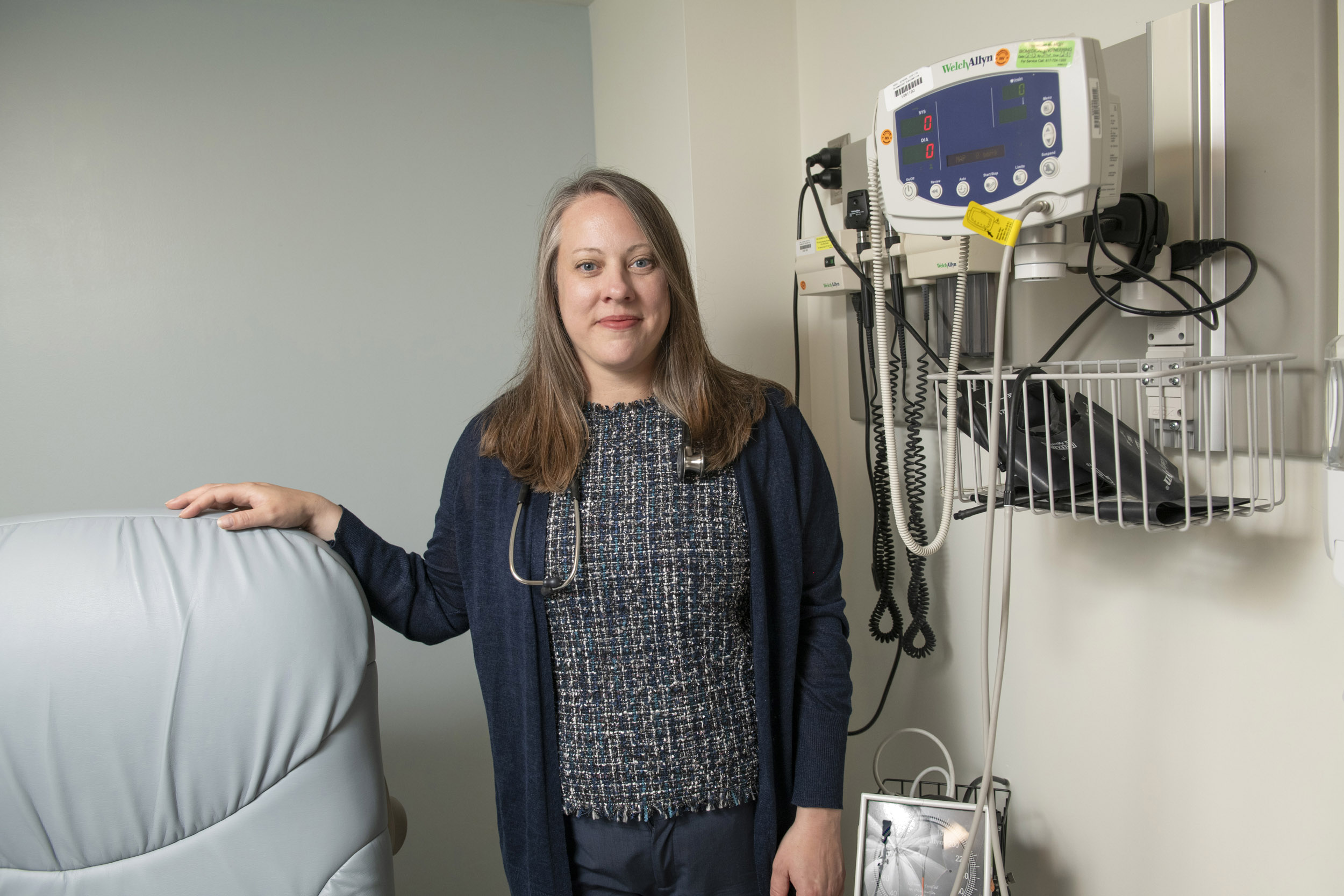
Health
DNR orders for Down syndrome patients far exceeded pandemic norm
Co-author sees need for additional research and earlier, deeper conversations around care
The first year of the pandemic was marked by a sustained surge in hospital visits, forcing providers to stretch resources to meet needs. Discussions about triaging patients and rationing care were of great concern to Down syndrome advocates at the time, says Stephanie Santoro, an assistant professor of pediatrics at Harvard Medical School and co-author of a recent study on do-not-resuscitate orders that suggests those concerns were justified.
A DNR order directs medical personnel not to provide CPR — cardiopulmonary resuscitation — to a patient if their breathing stops or heart stops beating. The order is determined by the patient, or if they’re unable to do so, by their family or guardian, typically in consultation with a healthcare provider. Santoro, also director of quality improvement research for the Down Syndrome Program at Mass General, worked with fellow investigators to examine billing codes and claims data for 1.7 million patients at 825 U.S. hospitals between January 2019 and June 2022, and then examined diagnoses and DNR status for people with and without Down Syndrome. The team found that people with Down syndrome and a diagnosis of COVID-19 or COVID pneumonia were six times more likely to have do-not-resuscitate orders than similar patients without Down syndrome. We talked to Santoro about the findings in a conversation that has been edited for clarity and length.

Why did you do this study?
It seems like a lifetime ago, but early in the pandemic, extreme steps like rationing ventilators were being discussed. In the Down syndrome community there was a lot of worry, of wanting to protect the rights of people with Down syndrome. We also began this study because there’s very little about DNR orders in the Down syndrome literature, and our first author, Jennifer Jett, had a real interest in the topic.
“Someone with a diagnosis of Down syndrome and COVID pneumonia had six times the odds of having DNR status.”
What was the main takeaway?
Someone with a diagnosis of Down syndrome and COVID pneumonia had six times the odds of having DNR status ordered on admission to the hospital as someone with the same diagnosis without Down syndrome. That was the main finding. I should say that the nature of the study means that these were associations, meaning we can’t directly determine causality.
Was that surprising?
Yes and no. When we first saw this, we wondered if there were physiologic reasons behind it. In the literature, there are many studies that show that people with Down syndrome do get sicker, have longer admissions, and need more support if they have respiratory infections. So our first thought was that perhaps the folks with Down syndrome were more sick with COVID pneumonia than the people without Down syndrome. We tried to compare some comorbidities — like intubation rates, if they had been in the ICU, or if they had come from acute care — but it didn’t pan out to have a similarly high odds ratio as the diagnosis of Down syndrome.
Your reasoning was that if someone comes into the hospital sicker, it would be more likely that they had a DNR status?
That’s what we wondered: Might people or their families be choosing DNR status when admitted with high acuity, life-threatening disease? We also wondered whether the folks with Down syndrome were older or if there was some other intervening covariable that would explain the high odds ratio of DNR status. But we couldn’t find anything that explained it.
When you reached that point, what did you think?
We were all a bit surprised — and concerned — that we had found a difference in care for people with Down syndrome. There’s not much literature around this and there are not many people who are studying end-of-life care for people with Down syndrome, so it would be great to replicate this finding in a future study.
Is there any reason that the DNR status of people with Down syndrome shouldn’t mirror that of the general population?
I don’t think anything has been done — apart from our study — that assesses the rate of DNR status in people with Down syndrome, so I would just be guessing. I can say that there are a number of medical conditions that can go along with Down syndrome. But in general, people with Down syndrome are leading healthy, happy, productive lives. I think the DNR status rate should likely be the same as for people without Down syndrome.
And six times greater is a really big number.
Right.
“This whole topic of end-of-life care and how you talk about that with someone with an intellectual disability is important to think about and to research.”
You work with a Down syndrome population. Are there other areas where patients may face unequal access to healthcare or unequal treatment?
The first thing I think of is life expectancy in general. Decades ago, the life expectancy for people with Down syndrome was in their 20s or 30s. Now it’s improved to the 60s. That difference in life expectancy is related to better medical care and better access to care, but there are still gaps.
Are we talking about preventive care? Can you give some examples?
I did a study here at MGH and one in the past in Ohio that show that there are recommendations that are not being met. The American Academy of Pediatrics recommends that every person with Down syndrome have their thyroid checked once a year with a TSH blood test. Only about two-thirds were getting that test done. When we looked at overall guidelines, only about 13 percent of kids with Down syndrome were up to date on all the guidelines — basic blood tests and evaluations, hearing tests.
In the new paper, the team recommends starting conversations around this issue. What would be the nature of those conversations?
In our clinic, we’re trying to provide more multidisciplinary end-of-life support as our patients get older. It’s difficult for people with Down syndrome because there’s such a range of different abilities and communication levels, and many of our patients have guardians who are helping with their medical decision-making. The time of admission is a busy, acute moment, so it would be nice if a trusted medical provider could have these broader end-of-life discussions with families and patients earlier to give them time to think about their decisions and what they want.
Is there any way to know how much input the person with Down syndrome has in this decision?
There’s not much in the literature, but including people with Down syndrome in healthcare discussions is a real area of passion for me. I’m trying to do more studies to collect information directly from people with Down syndrome because studies often default to the caregiver or the guardian. In a few years, we could do a follow-up and look at the claims data again to see if things have changed. But we believe this whole topic of end-of-life care and how you talk about that with someone with an intellectual disability is important to think about and to research.

